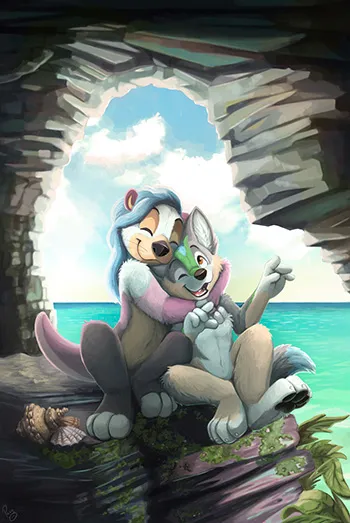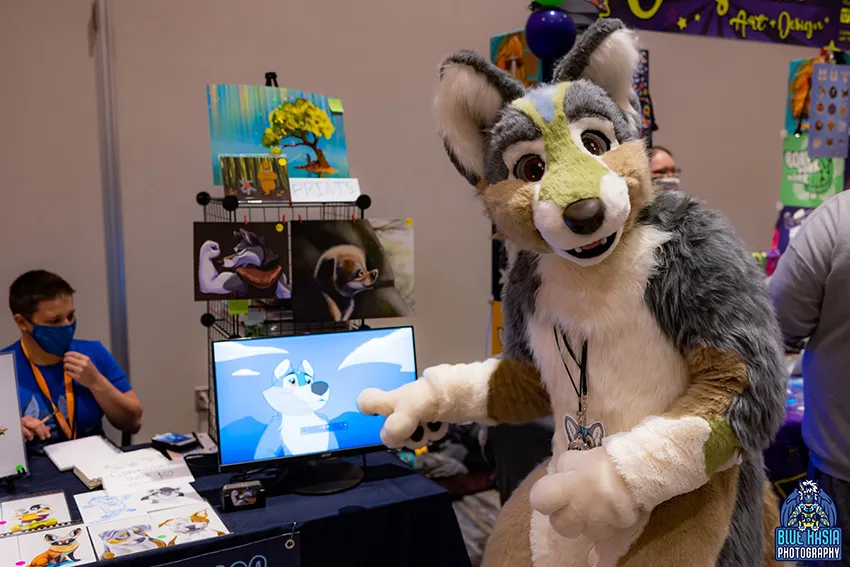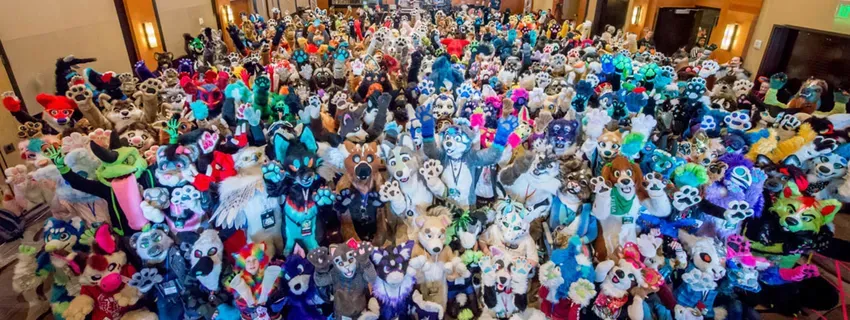Enthusiasts of the anthropomorphic arts will emerge from their hibernation this weekend, to gather for a convention restored to its pre-pandemic glory. Since its founding in 2017, Anthro Northwest has billed itself as an arts event more than a furry convention, and its "all-ages, inclusive" atmosphere promises a wholesome, PG-rated experience.
Their strong online presence aside, in the analog world, furries have preferred to keep their heads low and stick to the treeline, and their reasons for that go back decades. Historically, when the fandom has been in the news, it has rarely been for the reasons its members would like. The 24-hour news cycle demands engagement, after all, and what could be better for that than a shock piece about a bit of so-called "deviancy"?
For instance, in November last year, furries were used as a political punching bag – or perhaps a blunt instrument – when Republican politicians such as New Hampshire's Don Bolduc repeatedly lied that public schools were installing litter boxes for what he called "furry" students. Given all the right-wing bile about gender identity in schools, it's likely that the ultimate targets of those rumors were Trans kids.
Mind you, things have been getting better for furries, now that a few honest documentaries have been made on the subject and anthropologists have taken notice. By the numbers, we now know that the furry fandom is not the sex-crazed cult that mainstream news, CSI, and "cringe compilation" videos would have us believe.

What are furries, really?
But that same media-shyness caused by bad press has also kept furries from improving their reputation with the general public. Before we get into all the good things furries are doing for the world, or at least for Seattle, we need to break down what furries really are.
The truth is (as furries have been telling us for years) that they're a group of hobbyists with an appreciation for anthropomorphic art. I'm writing about them here because they also happen to have a vastly greater proportion of Queer people than the general population, according to a 2020 survey by the International Anthropomorphic Research Project.
The survey found that only 10% of furries described themselves as heterosexual. And if you still think furries are exclusively a "sex thing," note that only 4% of respondents listed sex as the most important part of the fandom; in fact, 10.5% said they identify as Asexual, which doesn't preclude them from sex, but it does put a big dent in one of the most prevalent stereotypes.
But since numbers aren't always convincing and can be misleading, I reached out to the founder of Anthro Northwest, who goes by Gabriel, for his take on all this.
"'Furry' is such a diamond," Gabriel said of the fandom. "It's this shiny, beautiful thing. You look through a facet and you see something, and you turn it a little bit and look through a different facet, and you see something else beautiful. There are so many different things you can celebrate in the fandom."
The reasons for that multifaceted nature are themselves complicated. Unlike most fandoms, which are usually tied to a genre, creator, company, or particular intellectual property, furries are brought together by a shared love for the more agnostic category of anthropomorphic art.
That love spans all speculative genres and artistic media, from cosplay in the form of fur suits, to video games, literature, and even music. And the art furries make is often bespoke in a deeply and precisely personal way, which has made the fandom particularly resistant to mass commercialization.

Finally, the convention
Furries are a wildly diverse group, artistically and in many other ways. Then what the heck are they up to at Anthro Northwest?
Like any convention, it has panels. Some are educational on the crafts front, focusing on the making, maintaining, and wearing of fur suits. Others, such as "Starting a Furry-Based Freelancing Business," are about making money.
A surprising number cover mental health topics, like "Knowing Your Limits and Preventing Burnout," a discussion on healthy creativity; and "Being Pawsitive, Inside and Out," which is a space to share the positive effects of the fandom on one's life and "explore how to bring forward your best self." Anxiety, gender performance, postconvention depression, grief – there are panels addressing all of those issues and more.
Charity has always been a big part of Anthro Northwest, too; it's actually a 501(c) nonprofit. This year it has partnered with Sarvey Wildlife Care Center, whose mission is caring for and rehabilitating injured, orphaned, sick, and displaced wild animals, so they can be safely released back into the wild. The center also helps educate people on environmental and ecological topics.
Aside from the money from ticket sales, "celebrity artists" are scheduled to offer personalized doodles to donors, and there will be a raffle and an auction as well.
Of course, there are plenty of more commonly fun things going on, too, like DJ performances, movie screenings, bedtime stories, video game tournaments – you get the idea.
"This year [is] about restoration," Gabriel said. "Last year we pared it back a lot. A lot of the really cool events got put on hold for a little bit. But the film festival is coming back this year. There should be a big parade, with a big group photo – I dunno, it feels like the magic and the energy is back."
"It's a celebration of beauty and love," Gabriel said, "and the people there are amazing, wonderful, and kind."
You can learn more about this year's Anthro Northwest at https://www.anthronw.com/, and get updates on any of its current or upcoming events on Twitter @anthronw.


